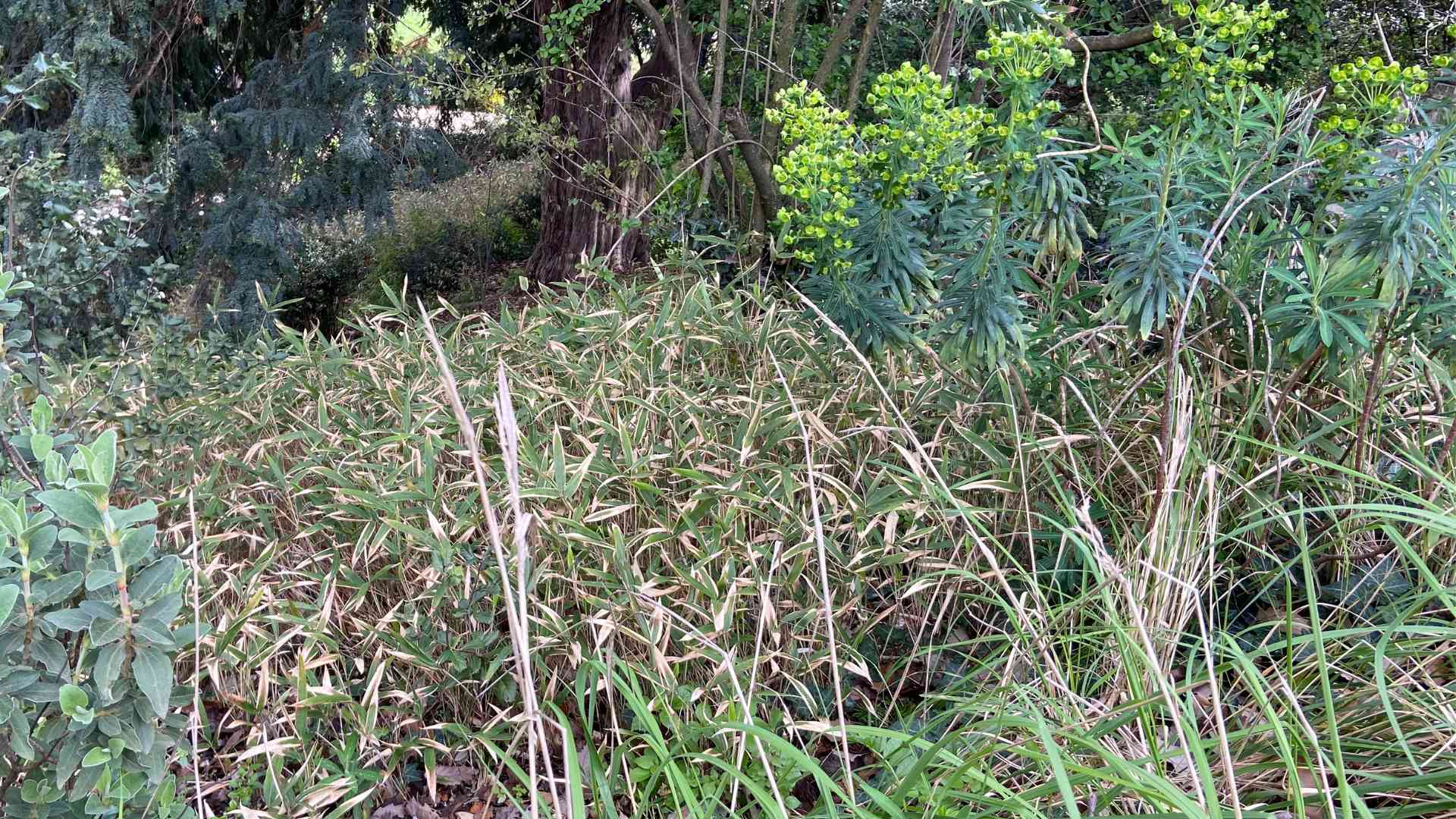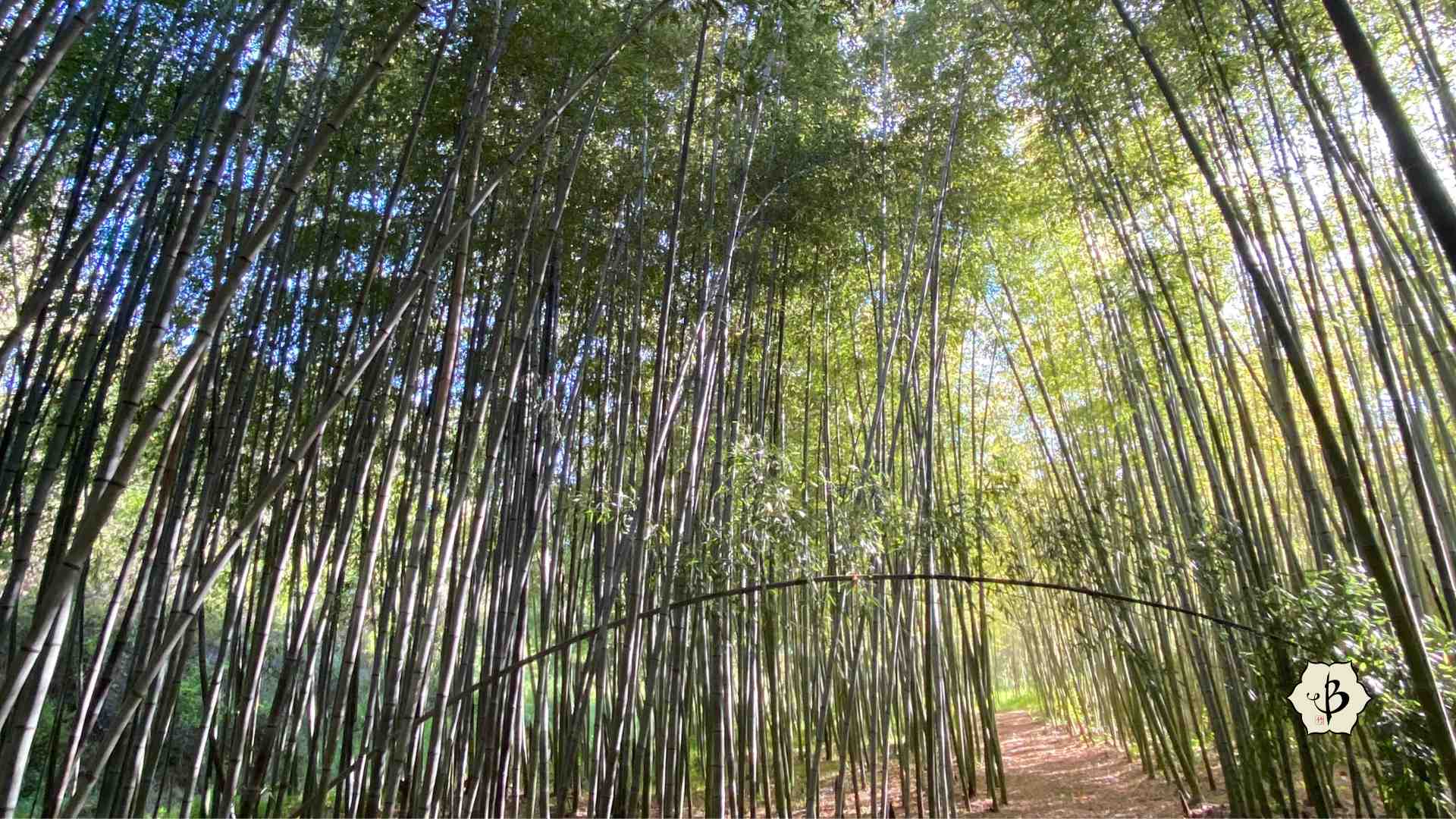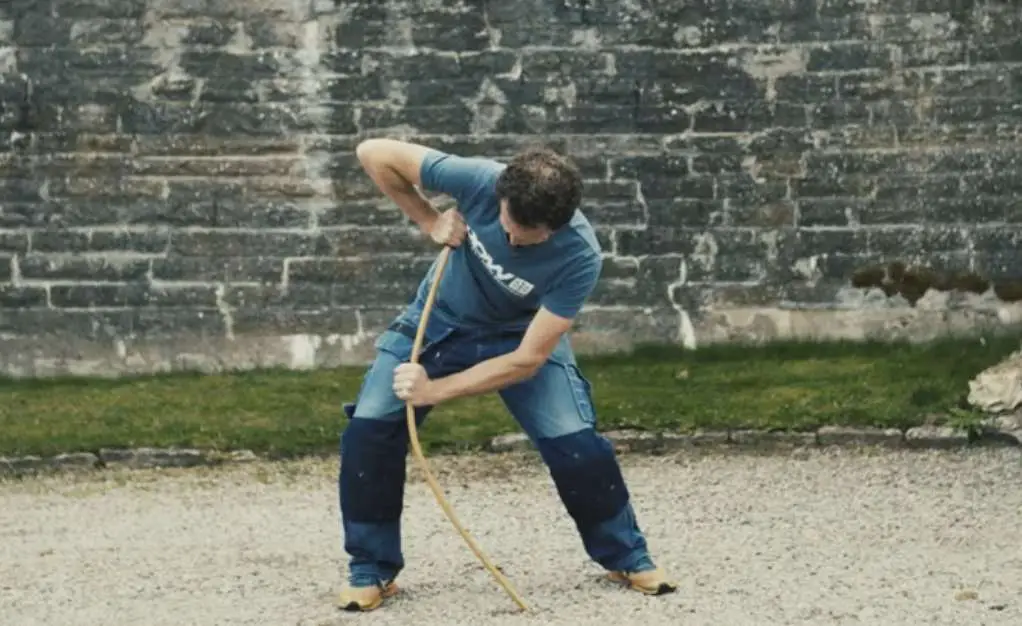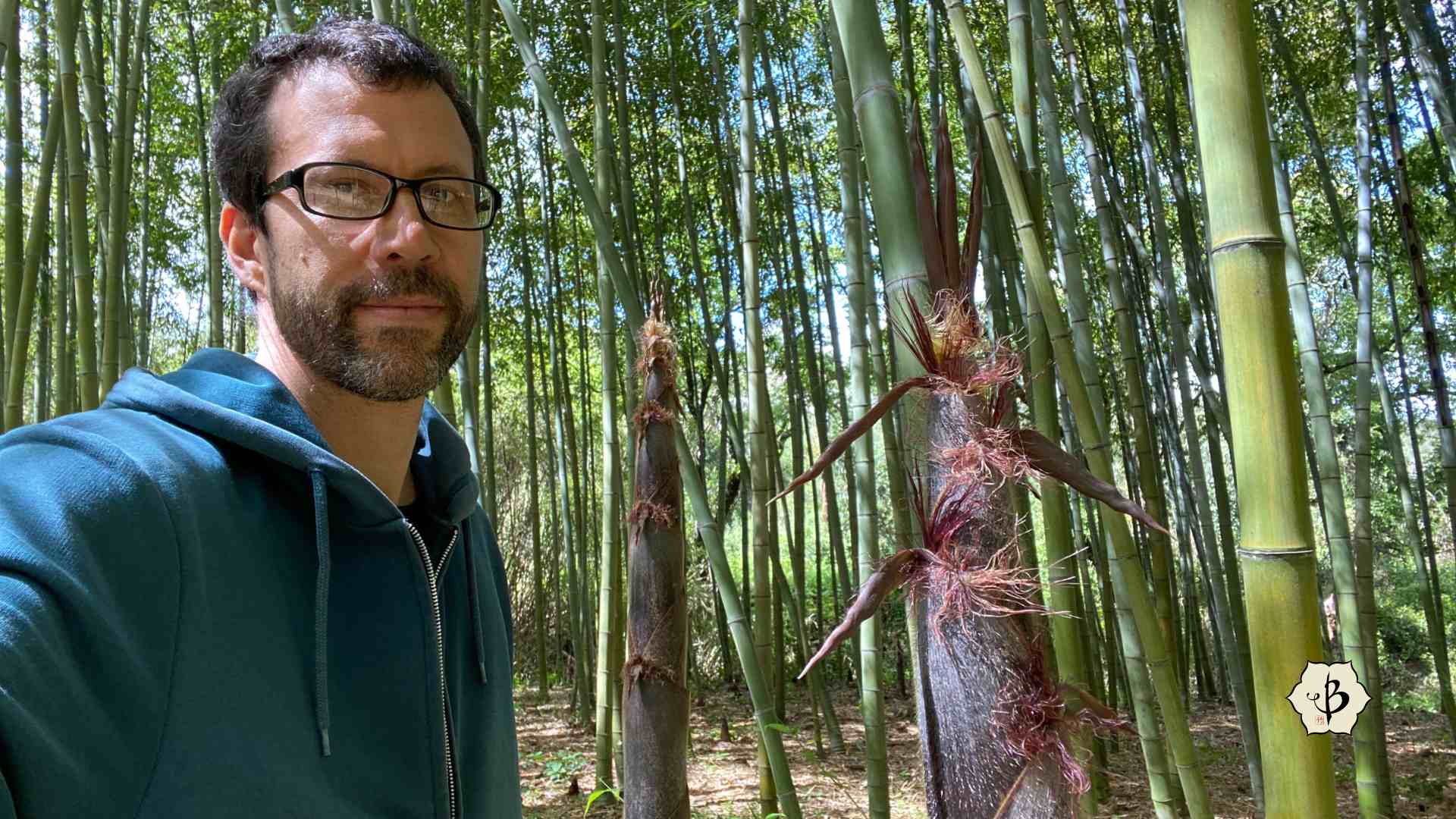The more you learn about bamboo, the more there is to know. It’s a plant—or family of plants—unlike any other. Revered for the strength of its wood, bamboo is actually a grass. Feared for the tenacity with which it grows, bamboo can easily take over your backyard and wreak havoc on the sprinkler system.
If you know anything about bamboo, you know it’s a shrub to be reckoned with, a force of nature. But chances are, there are a few things about bamboo you didn’t know. And number 8 will shock you!
But seriously, we put this list together to dazzle and amaze bamboo enthusiasts of every caliber. Whether you’re a novice or an expert, I’m pretty sure you’ll find a few new facts here that you weren’t aware of.
NOTE: This article first appeared in September 2019, most recently updated in June 2024.
Amazing facts about bamboo
1. Bamboo Flowers
As a member of the grass family, bamboos will flower, but with varying degrees of regularity. Some bamboos are monocarpic, meaning they will flower once and then die, whereas others are polycarpic and can flower repeatedly. Certain types of bamboo only flower once every 120 years. And there are species of bamboo which bloom synchronously, meaning that every specimen of that species will bloom on the same schedule, regardless of where they are in the world, and even if they only bloom once every 60 or 80 years.
(Check out our in-depth article on Bamboo flowering to learn more.)

2. Diminutive Bamboo
Timber bamboo consistently stuns people with its towering stature and formidable girth. But other varieties of bamboo are amazing for how small they are. In the Amazon Rain Forest, below the colossal canopies, you can find tiny bamboos that grow no larger than a pencil.
(See our article on Dwarf Bamboo.)

3. Etymology
According to the most well-informed word nerds, the name bamboo was first used in the Indonesia archipelago. The word comes from the onomatopoeia for the sound of hollow canes knocking together.
4. Slippery Slopes
Among its multifarious uses, bamboo is ideal for erosion control. Throughout Asia and Africa, bamboo is planted on slopes and near river beds to prevent landslides and mudslides. Bamboo’s thick network of rhizome roots do a marvelous job of holding the topsoil in place.

5. Chopstick Frenzy
According to Wikipedia, the Chinese go through about 45 billion sets of disposable chopsticks every year. And in Japan they use about 200 pairs of chopsticks per person per year. Such levels of consumption put an enormous demand on the natural resources, whether they’re making chopsticks from trees or from bamboo. A far better option would be to eat with re-usable chopsticks, which can also be made from bamboo.
(See our article on Zero Waste products from bamboo.)
6. Do Me a Solid
When you think of bamboo, you probably have an image of long, woody poles, cylindrical in shape and hollow in form. This is fairly accurate. But did you know there are a few varieties of bamboo that grow solid rather than hollow? The best-known variety is commonly known as “solid stem bamboo” and botanically as Phyllostachys heteroclada. This species is also called “water bamboo” because it has air canals that allow it to grow it wet soil.
(Check out more detailed article on Water bamboo.)

7. Out of Luck
Many bamboo lovers keep a pot of Lucky Bamboo in their home or office. But this auspicious plant is actually Dracaena sanderiana, of no relation to bamboo. It may indeed be lucky, but it’s not bamboo. True bamboo does not grow well indoors and definitely won’t survive in a vase of water.
(Take a look at our story on Lucky bamboo to learn more.)
8. In the beginning
Far Eastern folklore is filled with legends and myths about bamboo and stories of the first man and woman originating from inside a hollow stalk. In a story from the Philippines called “The Strong One and the Beautiful One”, a lonely bird stops in the forest to take a break from a long flight. While resting, the bird is struck by a falling bamboo pole. Seeking vengeance, the bird begins pecking at the pole, until at last it cracks. When the hollow cane opens, a man (the strong) and a woman (the beautiful) emerge from inside. They are the first members of the new race of humans.
(For more classic bamboo lore, see our lengthy article on Bamboo symbolism.)
9. O2 Joy
According to the experts in the field, a grove of mature bamboo will release about 35 percent more oxygen than the same area of trees. This makes bamboo cultivation superior to most any other type of forestry as far as global warming is concerned. Through photosynthesis, all plants convert CO2 (carbon dioxide) into oxygen, but bamboo does this more quickly on account of its high metabolism. In the process, it also sequesters more carbon from the atmosphere into the roots and soil.

10. Head of the Class
In Bali, Indonesia, there is a school built entirely from bamboo. The Green School, as it is known, offers a worldly education focussing on global awareness and environmental stewardship. A school like no other, they strive to provide a new model of education that ignites the imagination of its students.
11. Higher Education
Affiliated with the Green School in Bali is another remarkable institute of higher learning. Through intensive workshops, Bamboo U trains green builders and innovative engineers from around world to build solid, sustainable and magnificent structures from renewable, fast-growing bamboo. From modest mother-in-law units for the backyard, to the most prepossessing bamboo temples, you can learn to build just about anything from these master bamboo builders.
Check out these schools for studying sustainability.

12. Global Superpower
Various species of bamboo grow indigenously on five continents. There are native species everywhere but Europe and Antarctica. One species is even native to Russia.
13. Too Much of a Good Thing
A Giant Panda can eat about 40 pounds of bamboo every day. In order to process this much of the woody grass, the Panda has to spend about 14 hours a day chewing. As the mature stalks of bamboo aren’t terribly nutritious, the bears need to eat about 40% of their body weight daily.
Young, tender shoots of bamboo are a far more popular and digestible snack for humans. (See our article on Bamboo shoots to learn more about it.)
14. Keep on the Grass
Chinese botanists are currently working to hybridize giant bamboo grasses with smaller grasses like rice to produce a super-grain capable of feeding the world.
15. Smile for me
Bamboo charcoal, as black as a crow’s wing, can actually make your teeth cleaner and whiter. The charcoal has anti-bacterial properties that make it an excellent cleaning product. It is the key ingredient in many all-natural toothpastes.
(See our article on Bamboo charcoal for more info about its unexpected benefits.)

16. Go Fish
Bamboo makes some of the most sophisticated and state-of-the-art fishing poles in the age-old fishing industry. Trout Grass, an award-winning documentary film from 2005, looks at the origins of the fly rod, from its humble beginnings in rural China to a cutting-edge workshop in modern-day Montana.
Check out our articles on Tonkin Bamboo and Bamboo Ski Poles.
17. Grow Boldly
Bamboo is widely celebrated as the fastest-growing plant on earth, with some specimens growing more than a meter a day in the growing season. This means you can literally pull up a lounge chair and watch it grow. So what’s the next fastest-growing plant in the world? That rare distinction probably belongs to giant kelp (Macrocystis pyrifera) which can grow about 2 feet a day.

Still curious?
The Bambu Batu blog is filled with remarkable and amazing facts about our favorite grass, bamboo. Check out our full length article on the Benefits of Bamboo, a discussion of Bamboo vs. Hemp, and a quick Q & A of Bamboo FAQs for more fascinating reading.
PHOTO CREDIT: Bambouseraie botanical garden in Languedoc, France (Photo by Pacha Hornaday)


























Great information to the masses. I had 70 plus variation of bamboo in the past. Great plant.